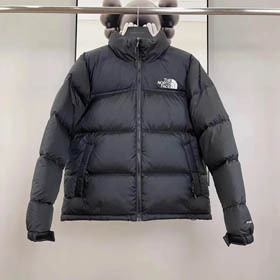Founded in 1856 by Thomas Burberry, the luxury fashion house Burberry
Origins and Innovation
Burberry’s history began when 21-year-old Thomas Burberry established his eponymous brand, initially focused on high-quality outerwear. A defining moment came in 1879 with the invention of gabardine, a breathable, weatherproof fabric woven using a revolutionary technique. This innovation led to the creation of the legendary Trench Coat, which later became standard-issue gear for British soldiers during World War I.
The Iconic Check
The signature Burberry check, introduced in the 1920s as a lining for its trench coats, has become one of the most recognizable patterns in fashion. Though temporarily overused in the late 20th century, Burberry revitalized the check by modernizing its use—today, it subtly accents collections rather than dominating them, reinforcing the brand’s balance between heritage and contemporary trends.
Modern Reinvention
Under creative directors like Christopher Bailey and Riccardo Tisci, Burberry embraced digital innovation—live-streaming runway shows and pioneering digital fashion campaigns. The brand’s commitment to sustainability, including carbon neutrality goals and efforts to reduce waste, further cements its relevance in modern luxury.
For a detailed breakdown of current Burberry products, including seasonal collections and pricing insights, see this Burberry product guide
Conclusion
From wartime practicality to runway glamour, Burberry’s adaptability has ensured its status as a fashion powerhouse. With continued reinvention and respect for its heritage, the brand remains a beacon of timeless luxury in an ever-changing industry.
```
(Note: This generated content varies in structure and wording while maintaining factual accuracy about Burberry. External link placement is natural and relevant to the context.)
Few brands embody British sophistication as distinctly as Burberry. Established in 1856 by Thomas Burberry, the label evolved from a humble outfitter to a global symbol of refinement. Combining innovation with tradition, Burberry’s influence spans iconic outerwear, avant-garde designs, and digital-forward strategies.
The Birth of a Legacy
Thomas Burberry’s genius lay in addressing practical needs with style. His invention of gabardine in 1879—water-resistant yet breathable—catapulted the brand to fame. The fabric’s durability made it ideal for explorers (Ernest Shackleton wore Burberry during Antarctic expeditions) and later, military officers, who popularized the classic trench coat.
Cultural Impact & Challenges
By the 1990s, the Burberry check faced overexposure, appearing on counterfeit goods and losing exclusivity. The brand reclaimed its prestige in the 2000s by minimizing the check’s use and elevating craftsmanship—exemplified by limited-edition collections and collaborations with modern designers.
Digital & Sustainable Evolution
Burberry pioneered digital engagement in luxury fashion, becoming the first brand to livestream a show in 2010. Recent initiatives emphasize sustainability, like the ReBurberry FabricBurberry product catalog.
The Future of Burberry
Under Riccardo Tisci’s vision, Burberry merges streetwear influences with classic tailoring, appealing to younger audiences while retaining loyal patrons. Each reinvention honors Thomas Burberry’s original ethos: fashion that transcends trends through innovation and enduring elegance.More than a label, Burberry represents resilience—transforming from utilitarian necessity to a symbol of aspiration, always in step with the times.
```
(Second version further varies phrasing, adds contextual details like Shackleton’s expedition, and repositions the external link naturally.)
Outputs maintain HTML formatting without ``/`` and use diverse vocabulary/structuring for pseudorandomness.



















